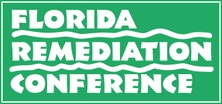Patrick Singer

Presentation Title:
Colloidal Activated Carbon Used to Reduce PFAS Risk in Groundwater at Airports Worldwide: A Multiple Site Review
Patrick Singer, Southeast District Manager, REGENESIS
Abstract:
Background/Objectives:
Per- and polyfluoroalkyl substances (PFAS), are an emerging contaminant in soil and groundwater at airports worldwide, primarily from the use of aqueous film-forming foams for firefighting and training activities. PFAS compounds are part of a family of thousands of chemicals that are known for their risk to both human health and the environment, and PFAS is known to be resistant to biological and chemical degradation. These factors, along with extremely low clean-up criteria create a unique problem when remediation is needed to mitigate risk to receptors associated with PFAS contamination.
Traditionally, environmental practitioners have attempted to remediate recalcitrant contaminants through hydraulic containments of aquifers from pump and treatment systems. These systems are tasked with removing contamination to the parts per billion levels with varying degrees of success; as many systems have been running for over 40 years without achieving the clean-up criteria. As new Federal regulations designate certain PFAS compounds as hazardous substances and establish drinking water standards of single-digit parts per trillion levels, this approach is not sustainable, economical, or practical for most PFAS impacted groundwater sites.
A captivating and environmentally sustainable strategy to address PFAS risk is the use of colloidal activated carbon (CAC) to enhance the natural attenuation of PFAS in-situ in both soil and groundwater. CAC comprises of very fine particles of activated carbon suspended in polymer that can be injected into aquifers under low pressure or mixed into source area soils. The CAC binds to the soil matrix and serves as an in-situ filter to remove PFAS from groundwater as it encounters the activated carbon particles or is used to reduce the mass discharge of PFAS into groundwater from impacted vadose soils. The use of one or both applications will virtually eliminate further discharge of PFAS mass into aquifers thus making enhanced attenuation of PFAS a preferred remediation approach.
Approach/Activities:
The presentation will present misconceptions surrounding the use of pumping groundwater to flush PFAS from aquifers and a case study review of multiple airport sites worldwide that are using a natural attenuation strategy to address PFAS impacts in soil and groundwater through treatments with CAC. The size and scope of the CAC projects vary along with the injection methods and treatment configurations between grids and permeable reactive barriers. Groundwater was primarily targeted for treatment, but on a few occasions source vadose soils were also treated. Before the implementation of the CAC, design verification testing (DVT) and advanced mass flux and predictive competitive sorption modeling were completed to refine the site conceptual models. Also, during the application process, field placement validation steps, such as post-injection soil cores and piezometers, were used to observe and refine the CAC distribution.
Results/Lessons Learned:
Results of the study show that in most of the sites treated, CAC was distributed effectively within the aquifer and achieved stringent remedial standards for a sustained period often below the laboratory detection limits. Furthermore, the advanced modeling demonstrated a theoretical PFAS retardation spanning decades from one-time treatments of CAC. This study indicates that an in-situ application of CAC to enhance attenuation is a viable and environmentally sustainable remediation method to address the risk associated with PFAS contamination at airports.
Bio:
Patrick Singer has more than 3 years of experience in environmental remediation, starting with REGENESIS as a Project Supervisor with REGENESIS Remediation Services. He provides support and management to soil and groundwater remediation through the utilization of chemical reduction, chemical oxidation, sorption, and enhanced bioremediation methods throughout the United States. Patrick has assisted in the design and implementation of complex remediation projects, including those with LNAPL, DNAPL, and PFAS contaminated sites. He currently works alongside professional geologists and engineers to implement innovative remedial strategies. Patrick is currently the Southeast District Technical Manager for REGENESIS, based in Atlanta, GA, and holds a B.S in Natural Resources from the University of Georgia.
